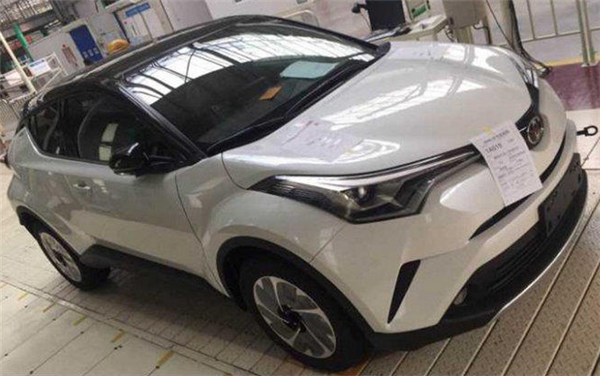FAW-Toyota IZOA to hit China market in June

Shanghai (ZXZC)- As early as the end of 2016, Toyota's all-new pint-sized SUV C-HR went on sale in overseas markets. In 2018, this SUV model will be introduced in China and be locally produced by Toyota's two joint ventures. The model produced by FAW-Toyota is named as IZOA whose concept model was unveiled at 2017 Guangzhou International Automobile Exhibition. Some dealers of FAW-Toyota revealed that IZOA mass-produced version will be launched at 2018 Beijing International Automotive Exhibition in April and officially goes on sale in June.
The photo of IZOA mass-produced version has already been released. The new model will be built on the Toyota New Global Architecture (TNGA). From the photo, the IZOA retains the design style of C-HR American version. It features a banner intake grille and eye-shaped headlights at its front end which make the IZOA look similar to the existing model of RAV4. The designer adopts the wave-shape waistline which is quite rare in the same level vehicle and the protruding line to connect front wings and taillight clusters which give a more smooth texture to the body.
The boomerang-shaped taillights are pretty recognizable when they are lighted at night. Meanwhile, IZOA features multi-spoke wheel hubs and a bi-color rear bumper, delivering a sportier visual effect.
As to the interior, it is predicted that IZOA will inherit the design style of C-HR American version. The vehicle will be equipped with a three-spoke multi-functional steering wheel, an integrated bluetooth phone and a multimedia system as well as a trip computer in the middle of the instrumental panel. An 8-inch floating display screen, mounted at the top of center console, is compatible with Human Machine Interface.
The IZOA will be powered by an all-new 2.0L engine based on TNGA, mated with CVT system. Thanks to the adoption of such technologies as increasing heat efficiency and reducing friction, the new engine, having been locally produced in China, will improve the power performance by 15%-20% and the fuel economy by 25% versus conventional engines.

